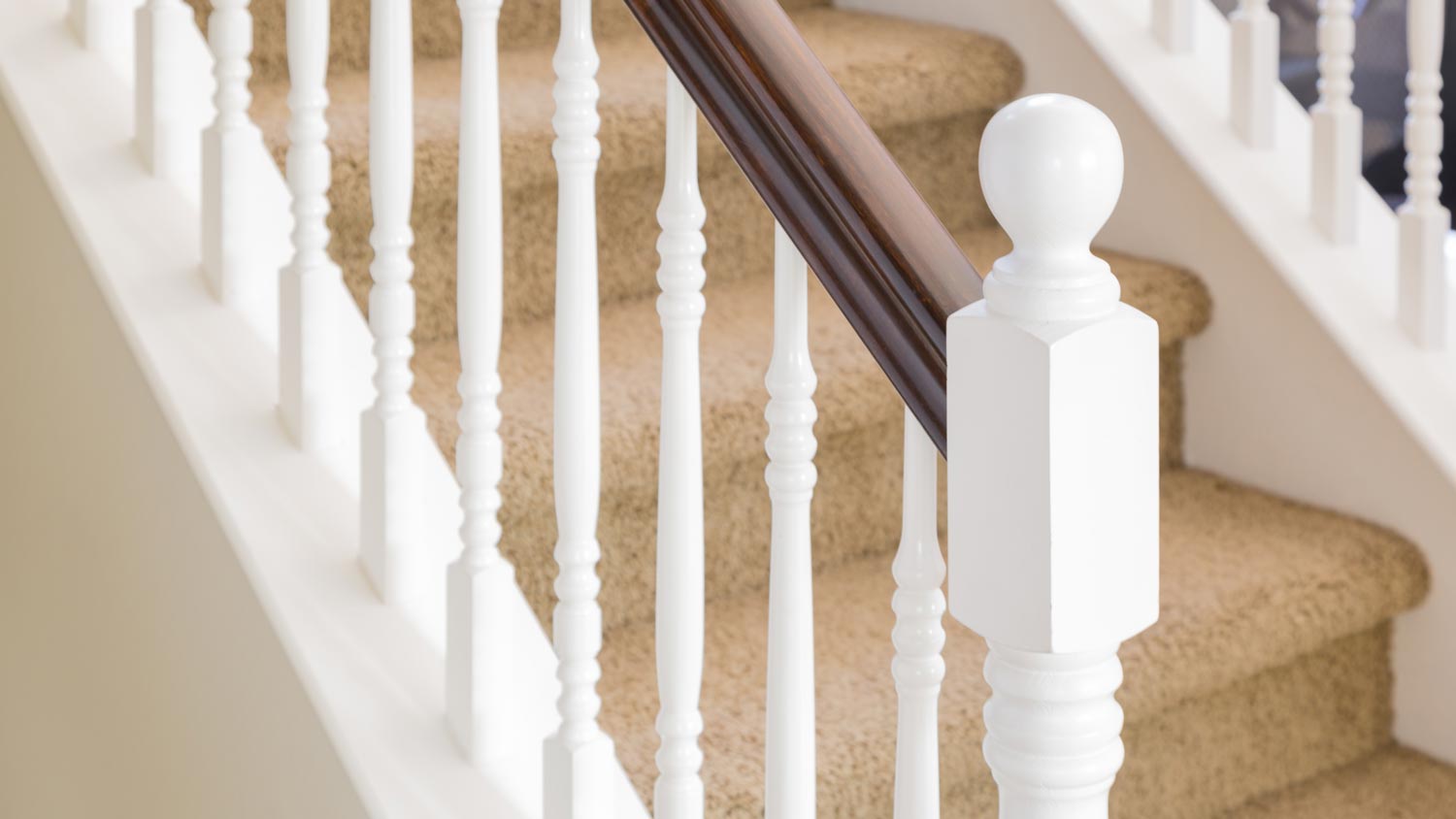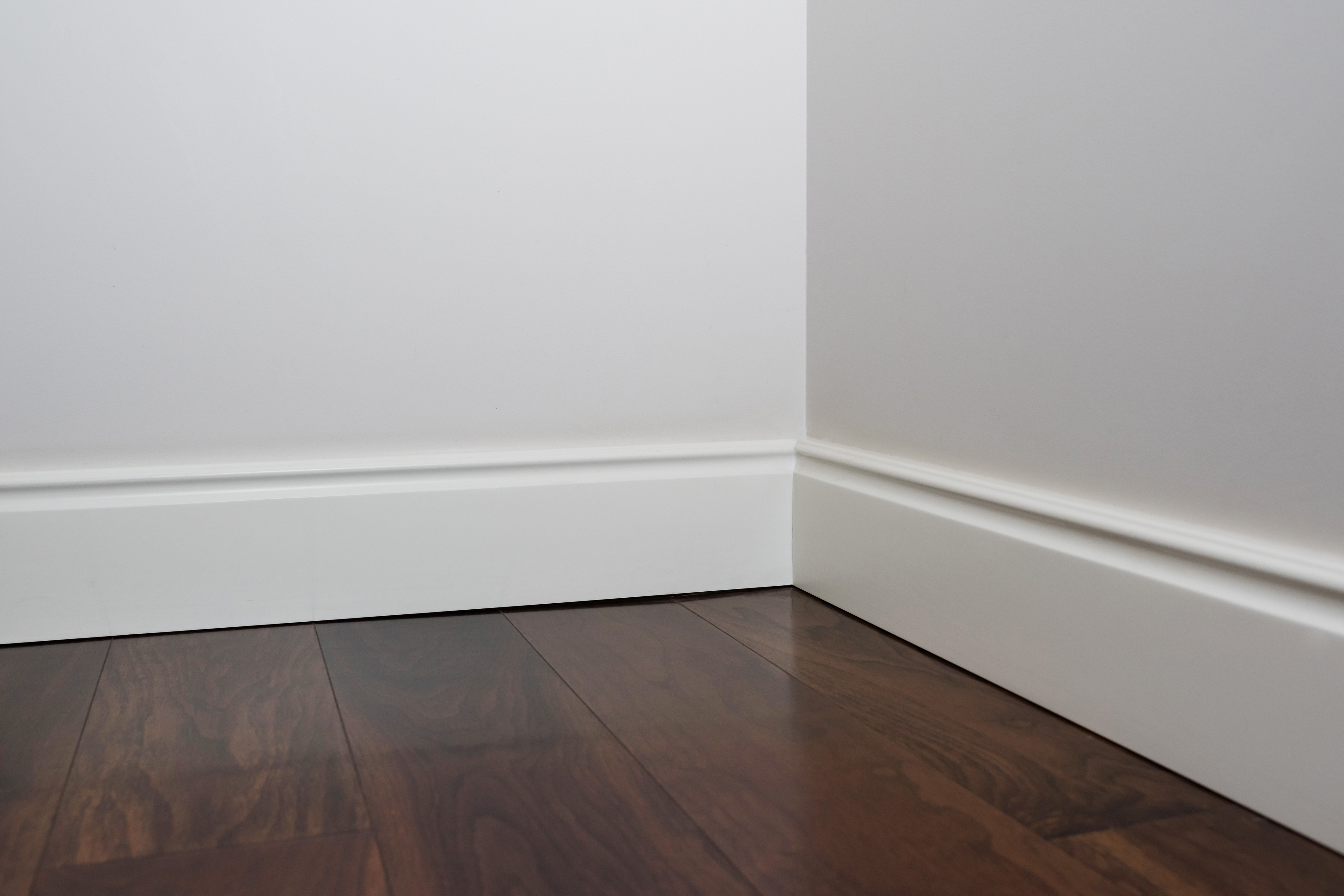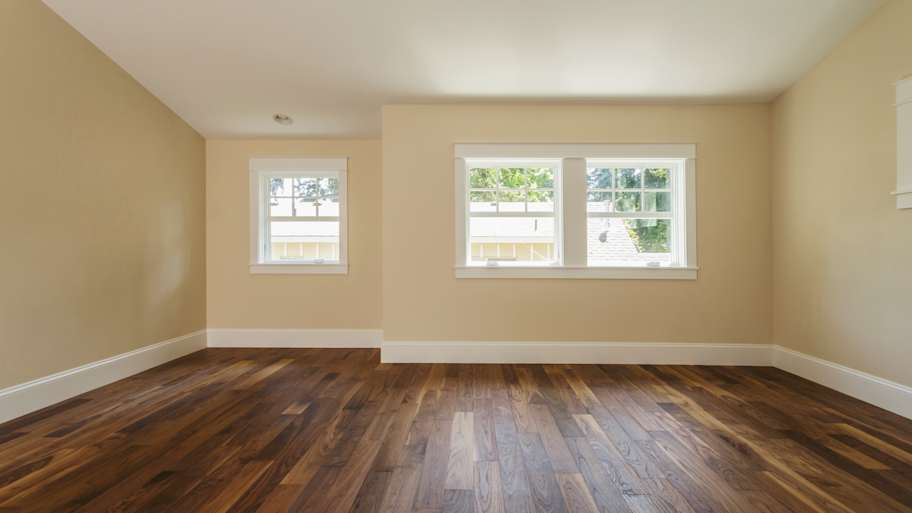
Get expert insights on stair railing repair cost, including average prices, cost factors, and tips to save money. Plan your stair railing repair project with confidence.
Caulk, epoxy, and water treatments are all ways to fix your home's trim and crown moldings


From wooden baseboards to wall or door crown moldings, your home's trim can add texture and detail to your interior. Unfortunately, though, a host of issues—from scratch-happy pets to water exposure—can damage trim or cause it to fall off the wall. This isn't just an eyesore, but also an issue that, if left untreated, could lead to expensive repairs or insects getting in your home.
Here are some tips on how to fix baseboards, trim, and crown molding.
Caulk seals wooden trim and prevents leaks, as well as exposure to dust and insects.
However, your baseboards, trim, and moldings can form gaps over time. These pockets not only take away from your home's aesthetic, but make trimming more prone to damage.
When your trim or crown moldings come loose, look for gaps. Apply new caulk to the area with a caulk gun to help seal these edges and make your home look better.
If you're really in the mood, you can paint after it dries. One of the best ways to paint trim is to make sure the caulk is dry and even before adding new paint. If a piece needs to be replaced, you can remove it and replace it by attaching a baseboard with glue or nails.
The cost of new trim installation could be $1,200 or more for your home. Fortunately, you may not have to install crown molding or baseboards, especially if the problem is the wood peeling away from the wall. In this case, you may only need to remove and replace the old caulk.
When caulk gets old or was applied poorly, it can lead to issues with your trim and molding. On average, caulk lasts about five years.
To remove caulk gently:
Dampen a sponge and run it along the top of your baseboard to loosen it
Gently place a putty knife (or another dull edge) in between the wall and baseboard
Run the edge gently along the baseboard to remove it
If the gap between your wall and trimming is around an eighth of an inch or more, caulk was likely used to seal your baseboards. For thicker areas, flexible trim strips may have been used.

Wood is one of the best types of crown molding materials and also the most popular for homeowners. While millwork finishes give your home a great look, it's important to understand that wood is the most likely type of crown molding material to get damaged by water exposure. New crown molding costs between $4 and $8 per linear foot, and new shoe molding averages $4.25 per linear foot.
In situations where it's isolated to small areas, you can remove the area and apply epoxy paint to cover it. But if there is wet and rotted flooring material behind the baseboards or crown, you may want to contact a local baseboard installation for assistance.
Moisture can compromise your floor's moldings or trim, leaving them swollen, chronically damp, or falling off the wall. If they are just slightly wet but still intact, adding a dehumidifier to the room could help.
Remember, though, that you should deal with excessive water damage right away. Water seepage could damage the floor or sheetrock behind it, leading to more expensive repairs that cost much more.
When considering tips for fixing baseboards, be sure to think proactively about what led to damage or issues in the first place. Otherwise, any fixes you make might be a waste of time.
Pets, especially playful or curious dogs and scratch-happy cats, are common culprits that can ruin your home's trim and molding. Whether claws, paws, or teeth mess with your baseboards, you might have to make some adjustments for your critters to preserve this area of your home.
You may consider getting a pet gate for a room with damaged trim and molding, or leave anxiety-prone pets in a kennel while you're away to prevent chewing and scratching. If all else fails, you might consider purchasing a taste deterrent that can be applied to your baseboards to help your furry friends think twice about chewing on those tasty baseboards in the future.
Similar to hungry or curious pets, your furniture setup could cause your trim and moldings to chip. Chair legs being pulled out, for example, could bump against your baseboards, causing them to come loose.
Moving furniture away from walls is an easy way to prevent future damage to your baseboards. If your layout prevents this, try installing clear baseboard protector tape in between the furniture and your wall to mitigate damage.
From average costs to expert advice, get all the answers you need to get your job done.

Get expert insights on stair railing repair cost, including average prices, cost factors, and tips to save money. Plan your stair railing repair project with confidence.

The cost to install wainscoting depends on labor, materials, and square footage. This guide will help you budget for your next project.

Discover the cost to install a stair railing, including average prices, key cost factors, and tips to save on your project.

When it comes to deciding between MDF baseboards versus wood, knowing the pros and cons of each option will help you make the right choice.

Coping, a common woodworking technique, is the secret to perfect inner corners with your trim. This guide will show you how to cope crown molding.

Wood trim ties rooms and living spaces together beautifully. Learn the best wood for baseboards that blend durable edges with designer vibes.